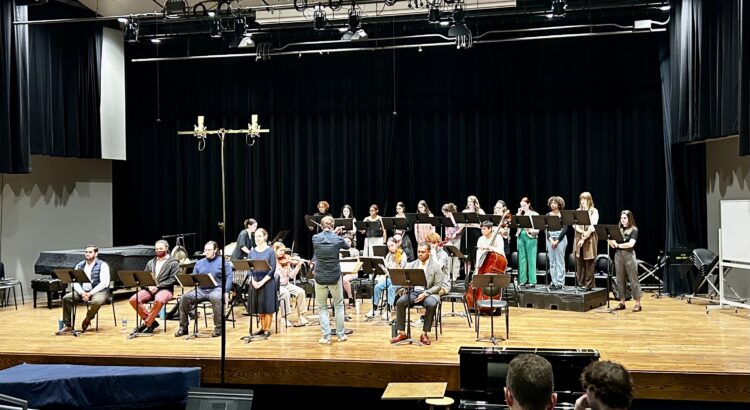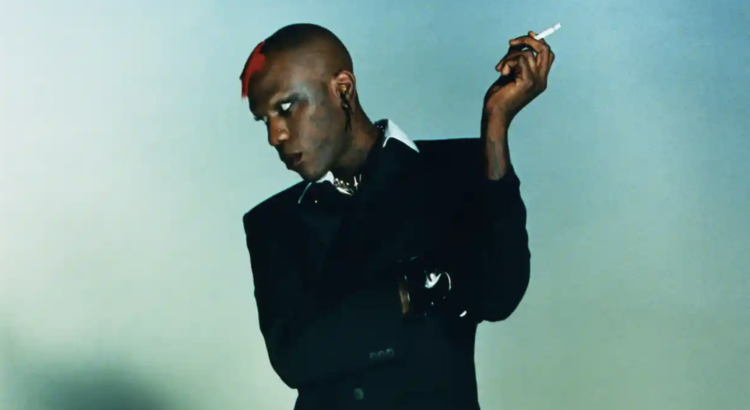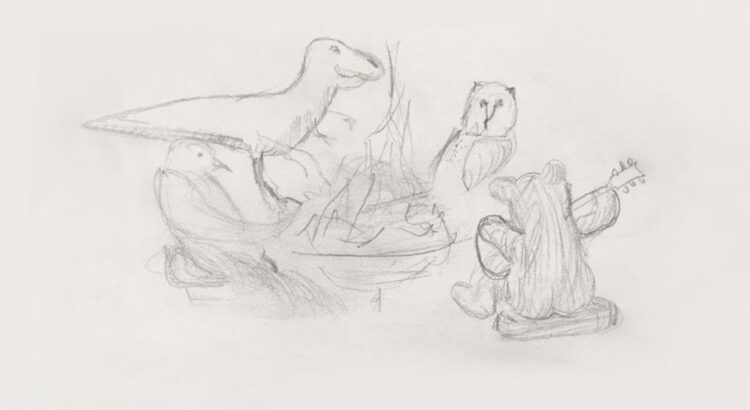In the world of opera, new compositions are blossoming in opera houses throughout the country. SMTD’s own Voice & Opera Department is currently working alongside the Santa Fe Opera (SFO) to workshop a new chamber opera entitled The Pigeon Keeper. Commissioned by the SFO, the score was composed by David Hanlon with Stephanie Fleischmann’s touching libretto. This piece is still in progress here at SMTD and will have select open performances before its final showing with the SFO in March. This open sitzprobe rehearsal was presented at the McIntosh Theater (Moore Building) last Thursday to a small audience of students and faculty.
The opera showcases six main characters: Orisa, Thalasso (her father), The Schoolteacher, The Widow Grocer, Kosmo, and The Pigeon Keeper. Additionally, a women’s chorus (SSA), serving as crooning pigeons and schoolchildren, accompanies them. The Contemporary Directions Ensemble, under the direction of Jayce Ogren, collaborates with this cast comprised of auditioned singers and chorus members from The University.
The opera takes place on “an archetypal Mediterranean island”, following a young optimistic girl named Orsia and her father. They go on a fishing trip together on the anniversary of Orsia’s mother’s death and find a refugee boy in the water. The two take the boy in, but Orsia’s father proclaims he must stay somewhere else, or he will be sent to “the other side of the island”. With great worry, Orsia searches the island to find him somewhere to live, only to be confronted with shut doors and unwilling neighbors.
“Sitzprobe” comes from the German word for “seated rehearsal” an unstaged rehearsal where the orchestra and vocal parts will first come together. There are no costumes or set pieces, and the focus is entirely on the music In the moment. But the music truly lent itself to creating its own atmosphere. I rather preferred the lack of distraction from any technical aspects, leaving me to fixate on the captivating text. Fleischmann’s lyricism is quite prolific: she depicts such reality through an art form that is praised for being boisterous and grand. Likewise, Hanlon’s music is gracefully whimsical, while rooted in truth about the pressing immigration crisis in the United States and abroad.
The SFO website describes the piece as “[an exploration of] how we respond to those in need in a time of hardship and scarcity; and celebrates the kindness of strangers, the power of human connection, and the unexpected places we find family.”
The final performance will be conducted by Kelley Kuo, alongside soloists Laura Soto-Bayomi, soprano; Bernard Holland, tenor; and Aubrey Allicock, bass-baritone. It will be a free fully-staged performance on March 10th at 4 pm in the Stamps Auditorium at the Walgreen Drama Center. The opera will have its professional debut at the Santa Fe Opera later this year.
March 10, 4:30pm. More on the Santa Fe Opera here.






